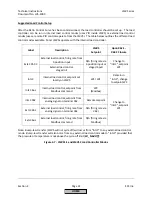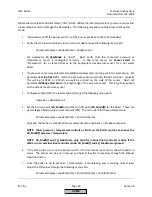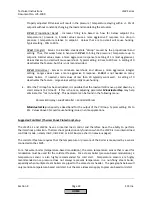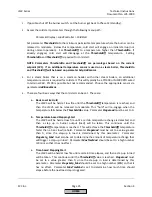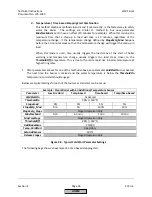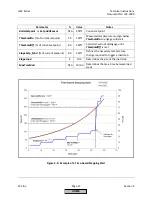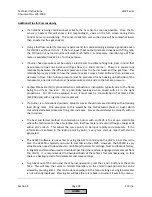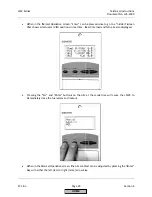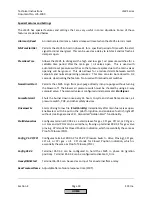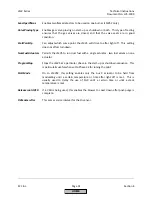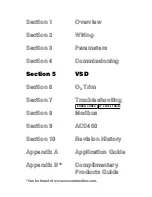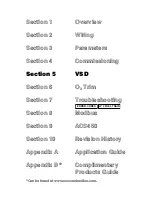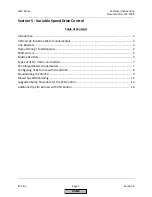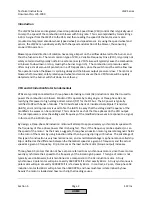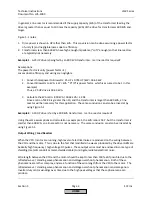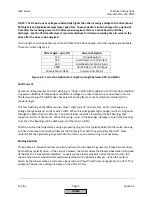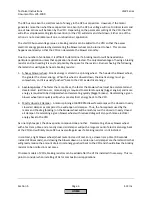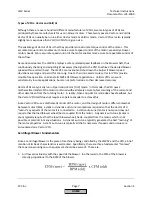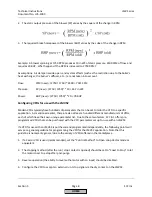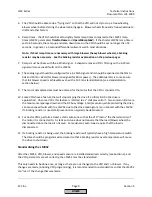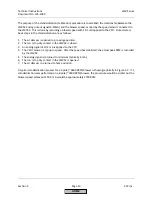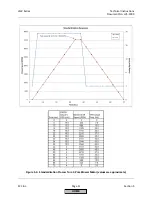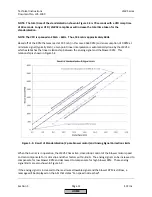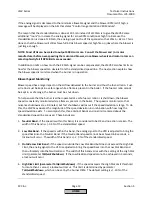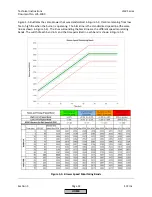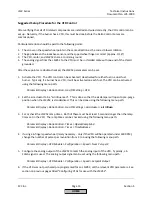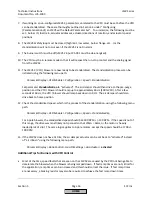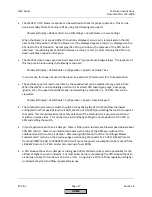
Technical
Instructions
LMV
Series
Document
No.
LV5
‐
1000
Section
5
Page
2
SCC
Inc.
Introduction
The
LMV52
features
an
integrated,
closed
‐
loop
Variable
Speed
Drive
(VSD)
control
that
is
typically
used
to
ramp
the
speed
of
the
combustion
air
blower
with
firing
rate.
This
is
accomplished
by
transmitting
a
4
‐
20
mA
signal
from
the
LMV52
to
the
VSD,
and
then
reading
the
speed
of
the
motor
via
a
motor
‐
mounted,
safety
‐
rated
encoder
wheel
(speed
wheel)
and
speed
sensor.
By
using
the
speed
wheel
and
sensor,
the
LMV52
can
positively
verify
both
the
speed
and
direction
of
the
blower,
thus
ensuring
proper
VSD
operation.
Blower
speed
and
direction
of
rotation
have
a
large
impact
on
the
airflow
delivered
to
the
burner,
and
thus
the
fuel
‐
air
ratio.
The
most
common
type
of
VSD,
a
Variable
Frequency
Drive
(VFD),
is
typically
not
safety
‐
rated
and
will
typically
not
fail
in
a
safe
manner
(a
VFD
failure
will
typically
cause
the
combustion
air
blower
to
slow
down
or
stop,
causing
the
burner
to
go
rich).
The
combustion
air
pressure
switch
offers
only
a
small
amount
of
protection
in
a
VFD
application,
since
the
switch
must
be
set
to
allow
low
fire
operation
when
the
blower
is
spinning
slowly
and
the
blower
output
pressure
is
low.
The
motor
or
blower
shaft
‐
mounted,
safety
‐
rated
speed
wheel
and
sensor
ensure
that
a
VFD
failure
will
be
quickly
detected
and
the
burner
will
shut
down
in
a
safe
way.
VFD
and
AC
Induction
Motor
Fundamentals
VFDs
are
typically
connected
to
a
three
‐
phase
alternating
current
(AC)
induction
motor
that
is
used
to
power
the
combustion
air
blower.
Modern
VFDs
operate
by
taking
single
‐
or
three
‐
phase
AC
and
rectifying
this
power
to
high
voltage
direct
current
(DC)
for
the
DC
bus.
The
AC
power
is
typically
rectified
to
DC
with
banks
of
diodes.
The
DC
bus
feeds
a
bank
of
Insulated
Gate
Bipolar
Transistors
(IGBTs),
and
a
microprocessor
is
used
to
fire
the
IGBTs
in
a
way
that
the
voltage
and
frequency
of
the
modified
sine
waves
can
be
controlled.
This
is
done
for
each
of
the
three
phases
on
the
VFD
output.
The
microprocessor
varies
the
voltage
and
frequency
of
the
modified
sine
waves
in
response
to
a
signal;
in
this
case,
the
4
‐
20mA
input.
By
design,
a
three
‐
phase
AC
induction
motor
will
attempt
to
approximately
synchronize
its
speed
with
the
frequency
of
three
‐
phase
power
that
it
is
being
fed.
Thus,
if
the
frequency
can
be
adjusted,
so
can
the
speed
of
the
motor.
As
their
name
suggests,
three
‐
phase
induction
motors
generate
magnetic
fields
in
the
rotor
of
the
motor
by
using
induction
rather
than
by
using
slip
rings
or
brushes.
The
advantage
of
this
type
of
construction
is
very
low
maintenance,
and
a
small
disadvantage
is
a
phenomenon
called
slip.
Slip
is
defined
as
the
difference
between
the
theoretical
speed
at
a
given
AC
frequency
and
the
actual
speed
at
a
given
AC
frequency.
Slip
increases
as
the
load
on
the
motor
(torque
output)
increases.
Three
‐
phase
AC
motors
that
do
not
have
slip
are
referred
to
as
synchronous
motors,
since
these
motors
exactly
synchronize
their
speed
to
the
frequency
of
the
incoming
AC
power.
This
type
of
motor
is
not
typically
used
on
blowers,
but
is
mentioned
as
a
comparison
to
the
AC
induction
motor.
A
truly
synchronous
2
‐
pole
motor
will
spin
at
exactly
3600
RPM
if
it
is
fed
exactly
60
Hz.
A
truly
synchronous
4
‐
pole
motor
will
spin
at
exactly
1800
RPM
if
it
is
fed
exactly
60
Hz.
In
contrast,
a
2
‐
pole,
three
‐
phase
AC
induction
motor
fed
60
Hz
will
spin
less
than
3600
RPM,
and
how
much
less
is
determined
by
how
heavily
the
motor
is
loaded
and
how
much
slip
that
loading
causes.
HOME
Summary of Contents for LMV 5 Series
Page 2: ...Intentionally Left Blank ...
Page 41: ...LMV Series Technical Instructions Document No LV5 1000 SCC Inc Page 7 Section 2 HOME ...
Page 42: ...Technical Instructions LMV Series Document No LV5 1000 Section 2 Page 8 SCC Inc HOME ...
Page 43: ...LMV Series Technical Instructions Document No LV5 1000 SCC Inc Page 9 Section 2 HOME ...
Page 44: ...Technical Instructions LMV Series Document No LV5 1000 Section 2 Page 10 SCC Inc HOME ...
Page 45: ...LMV Series Technical Instructions Document No LV5 1000 SCC Inc Page 11 Section 2 HOME ...
Page 46: ...Technical Instructions LMV Series Document No LV5 1000 Section 2 Page 12 SCC Inc HOME ...
Page 47: ...LMV Series Technical Instructions Document No LV5 1000 SCC Inc Page 13 Section 2 HOME ...
Page 48: ...Technical Instructions LMV Series Document No LV5 1000 Section 2 Page 14 SCC Inc HOME ...
Page 49: ...LMV Series Technical Instructions Document No LV5 1000 SCC Inc Page 15 Section 2 HOME ...
Page 50: ...Technical Instructions LMV Series Document No LV5 1000 Section 2 Page 16 SCC Inc HOME ...
Page 51: ...LMV Series Technical Instructions Document No LV5 1000 SCC Inc Page 17 Section 2 HOME ...
Page 52: ...Technical Instructions LMV Series Document No LV5 1000 Section 2 Page 18 SCC Inc HOME ...
Page 53: ...LMV Series Technical Instructions Document No LV5 1000 SCC Inc Page 19 Section 2 HOME ...
Page 54: ...Technical Instructions LMV Series Document No LV5 1000 Section 2 Page 20 SCC Inc HOME ...
Page 55: ...LMV Series Technical Instructions Document No LV5 1000 SCC Inc Page 21 Section 2 HOME ...
Page 373: ...Intentionally Left Blank ...

